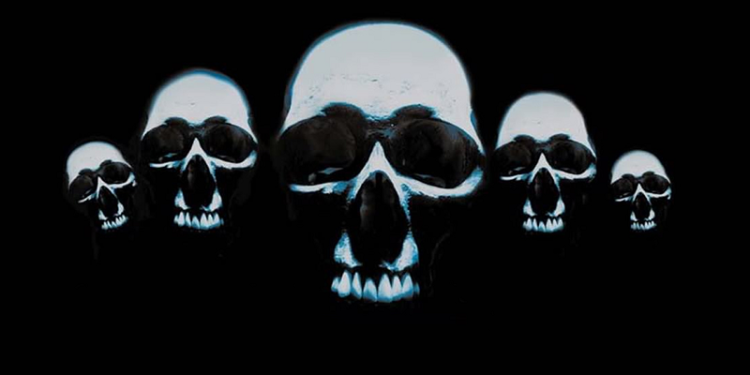Final Destination and the Dangers of the Mundane

When I was out at a restaurant the other day, seated on the patio. It was a really hot day out, and we were seated near the outdoor heaters. Asking about the heat, we were informed the heaters were not turned on, and shouldn’t even be connected. Above us was an oscillating fan, creaking and rattling. When it turned, it would shudder and threaten to come loose. My friend looked up and said, “That’s some Final Destination shit, right there.” I disagreed, stating that it would be the heaters sparking, back-drafting to the gas, and thus engulfing us in a freak fireball. We agreed that no matter how it happened, we were going to end up eating it if the chain of events started to play out. There is a fundamental truth in the Final Destination films – you can’t cheat death. You can run, you can hide, others can even take your place, but you can’t cheat death. This is standard horror film stuff…except for the fact that there is no villain. There is plenty of conflict, but there isn’t a villain for the characters to act against – other than the environment. This isn’t a Jigsaw-esque (Did you just Saw us, Rick?) carnival of carnage madhouse meant to expose human nature or reveal anything about the characters. It’s just a group of characters trying to survive in a world they suddenly believe is out to get them. In other words, the perfect sort of scenario to highlight the exploration pillar of 5e – particularly when you get down into the supernatural premise of the series.
For the uninitiated, the Final Destination series is based on the premise that before a disaster, someone receives a premonition of the event. The person then saves a group of people – either through intent or accident – but they all begin to die, one by one. Death has a plan for everyone, and will reclaim the lives of those who believed they have cheated their destiny. Each movie in the franchise slightly alters the rules of how the survivors will die – in the order they died, in reverse order, in…the order of context clues provided by photographs? Look, it doesn’t really matter – what’s important is that it’s turned into a mystery to solve in the moment as the characters start getting eviscerated thanks to water bottles and the temperature rising high enough to cause the AC to come on. The characters have to figure out the rules as they go along, all the while trying to save themselves, their loved ones, and sometimes people they vastly dislike. There aren’t any conventions within the series, save for danger lurking behind the banalities of life.

This series is…polarizing. The scores for the film are largely in the 40-50% good range, but the film series is way more popular than you might think. The entire five-movie series only cost $154 million to make, and made $664 million at the box office alone. For a series that most people have never heard of or remember, that’s impressive. The surface draw for the film is to watch the Rube Goldberg deaths as they unfold, but what resonates with the viewers is actually much deeper than that. The movie is an anti-horror horror film – denying the viewers the pleasures they would derive in slasher, monster, or even thriller sub-genres. There is no sense of catharsis or pleasure when a character dies. There isn’t any subtext on gender, sexuality, or morality. We know very little of the lives of the characters, and who they were before the tragedy occurs has little to no impact to the events of the film. The only view of the characters we have is around the moment itself. That isn’t to say the film is reductive and focuses solely on the “death is inevitable and comes for us all” narrative. The film actually has volumes to say, and all of it is applicable to making exploration a terrifying feature for your tabletop game. To do so, let’s look at the following things the Final Destiny does that sets it apart from other horror series:
- No Villain
- Environmental Threats
- Mystery
- Personal Stakes
- Sense of Movement
It might sound weird to say, but across five movies there is no villain for the Final Destination series. The characters never have to combat a person out to kill them, or face threat from people in an obviously conflicting way. Instead of reducing the tension, the tension is dispersed in a way that allows it to consistently build around everything within your frame of vision at any given time. This might seem counter-intuitive, but the lack of villain allows the narrative focus to shift from a character dynamic to a group dynamic. The groups that experience being spared from the impending catastrophe have to work together to continue to save each other so that they aren’t knocked off before they can figure out what ends the cycle. Rather than Johnny the Jock or Sally the Sexually-Active being ripped apart with little to no impact to the survivors – other than they are sad, I guess – if Johnny bites it within the Final Destination universe, that’s one less body to help death skip its next victim in the cycle. Two of the main characters in the first film despise each other, but they work together because neither of them want to die and they have to have someone else there to help them. This is not a problem that can be solved through brute strength or solo-heroics. The films ensure that everyone must work together or it’s going to be over for all of them (this is sort of the anti-Saw, as well). A villain doesn’t provide this dynamic, even if the villain is threatening the entire group. The villain is a tangible threat that can be defeated and provides a known-quantity of danger. Even with super villains there is a sense of power and scale established. By removing the villain, the power and scale are unknown quantities, with the danger consistently escalating. That doesn’t mean there can’t be any violence or combat for players, just that the central conflict isn’t resolved through those means. Removing the go-to mechanism for resolution forces players to have to get creative with their problem-solving. As a DM, I’m always on-board for a problem you can’t stab.

So if there is no villain, what provides this dispersed threat? Literally everything within frame of the film. A logging truck has a better slash-line (heh) than Jason Voorhees. Home repair equipment would deserve to be on death row. Fans, engines, glass, and workout equipment are killers waiting for their opportunity to strike. A water bottle racks up as many kills as some later slasher sequels. When a shot is presented, the first instinct of the audience is to survey the scene to discern what the biggest threats might be. Sometimes the obvious threats are the culprits, but other times it is the secondary or tertiary threats that attempt to claim the lives of the victims. For every water bottle becoming stuck under a brake pedal, there is another death caused by blatantly short-circuiting of electrical or mechanical parts. It’s a perfect blend of absurd and mundane. This sort of dichotomy is the perfect situation to highlight the threat of exploration. When the environment is out to kill the players in obvious and non-obvious ways it engenders a sense of caution and investigation. Likewise, it prevents analysis paralysis as the obvious answers aren’t necessarily the correct ones. The players have to rely on their instincts to neutralize what they can neutralize, but must be reactive when it comes to the threats posed to others by the items they missed. When the world’s your trap dungeon, things can get paranoid and tense right quick. This is a good thing.
A large portion of each film is dedicated to the group discovering how death is seeking to reclaim those that avoided their fate. The first film has death reclaiming each person in the order they would have died – with the added twist that others can save you in order to allow death to again skip over you. The second film has people dying in reverse order – with the caveat that new life will end the cycle. The third film requires photographs to be examined to give clues as to who is next – with the twist this time being people can die in your place. The fourth film…doesn’t really have any rules or outs and it is just fatalistic as hell. The fifth film revisits the rules of the first film – intentionally so – but adds the idea that you can gain the life span of others if you kill them. The mystery of who is going to die in what order is crucial to making the films work, but the lack of rules prevent it from becoming something boring to the audience or easy for the characters. The events of each film are “in world” and the first film’s catastrophe is the driving force of mythos for the rest of the film. It’s the stuff of urban legend, but it’s not as easy as just knowing the legend and then going through the motions. The group must still determine how death means to claim them and work to prevent it. This allows the events of the previous films to present the mythos in a way that doesn’t work to undercut the story – such as how it can happen in later Freddy and Jason installments (spoiler: Jason X is getting an article in the near future). Having a mystery allows players to actively engage with the mythos, and help direct the threat and tension. There are sure to be some missteps here and there as players learn the rules of engagement for the threat, after all. Importantly, it allows you to use something like this again in the future and allow the players to leverage their previous experience without having the problem solved. Divination is actually built into the mythos itself, so allowing cryptic premonitions that complicate rather than necessarily reveal until all investigation concludes is a good thing. Things becoming better-worse is always excellent – on both the player and DM sides.
As mentioned previously, the series does an excellent job of making the characters care about each other – even if they dislike each other. This is a result of each character having a personal stake in the outcome of the others. For every character that dies, there is a greater likelihood that the others aren’t going to make it out alive. While there is often genuine concern for others, this is all done with an underlying sense of personal risk. In some cases, saving a loved one is going to result in your life being lost – or at least the high likelihood of that occurring. This is pretty straightforward – all things considered – but it’s no less impactful for all that. The stakes are large for the characters, but the threat doesn’t expand outside of their social circle or a specific group of people. It’s not world-ending. It’s not a threat to all of humanity. It’s just something that matters to them, their loved ones, and the others that experienced the same tragedy as them. Anything that allows threats to be small-scale for players is a good thing. It’s a de-escalation of scope, but an increase in investment. The safety of the world is always important – it’s where you keep all of your stuff – but the certainty of personal death is a looming danger that brings it home to roost. Again, this isn’t revolutionary, but it’s just so goddamn focused it’s almost revelatory.

The last area I want to briefly focus on is the way the films use movement. The catastrophes involve – in order – an airplane, a logging truck, a roller coaster, race cars, and a bridge collapse. There are multiple bus, van, car, and other motorized vehicle-related deaths. The act of movement turns objects lethal. The movement of the characters results in unexpected deaths left and right. It all comes down to the idea of propulsion. These are events of motion driving the narrative. Standing still, the series says, will allow you a moment of relative safety, but at the cost of others and resolution. One of the few returning characters is cloistered away in a mental institute and is safe from the machinations of death until being drawn into the events of the current group of victims. Only when she begins acting does the threat return, culminating in a series of events initiated by her movements. Outside of the obvious dangers, the sense of motion also brings inherent choices to the characters. Do you act and move forward with your life, despite being aware of the risks? Do you instead opt to never move forward and remain locked in place out of a desire for safety? The film series presents motion as the only way through, and the root of much of the pain and suffering. It’s incredibly interesting. For players in games, movement is crucial to any sense of momentum and action within the game. Knowing that this movement is dangerous, yet the only way to get things done is an additional layer of tension that vacillates as the situation continues. The fence posts outside are completely safe…until the explosion of a fireball turns it into a deadly projectile. The fire is deadly until you throw the wagon down the hill into the side of the building to let loose those inside. That’s movement, folks!
Here is some brief guidance on how to run something like this for your players:
- NPCs should bite the big one first, as an illustrator
- Scale back from death to injuries for players – at first
- Injuries should linger – creating a “ticking clock” for completion to allow the injuries to heal
- Consider running this in locations that allow for player death as a failure state – planes, illusions, etc
- Failure should still matter, and death should want to be avoided
Looking for ways to push the other pillars of 5e is something that is a consistent mission of mine. Combat is fun, but a story needs to be more than that to be complete. Challenges need to be provided that stress more than that. Social challenges and conflict are often easier to design and implement than exploratory challenges. People having opposing desires or differences of opinions are natural sources of conflict. The answers for exploration are less clear – outside of extreme elements, natural disasters, or animals. The Final Destination series provides a path to make any environment an exploration challenge, and allows avenues of group-centric play. Plus, it allows you to kill off NPCs in totally gnarly ways to generate reactions – if that is your particular cup of tea. You can also be more restrained and have it hit NPCs that the players care about. There are a lot of options here, but one thing about the influence of the series on your game should be clear: you can’t cheat death.



